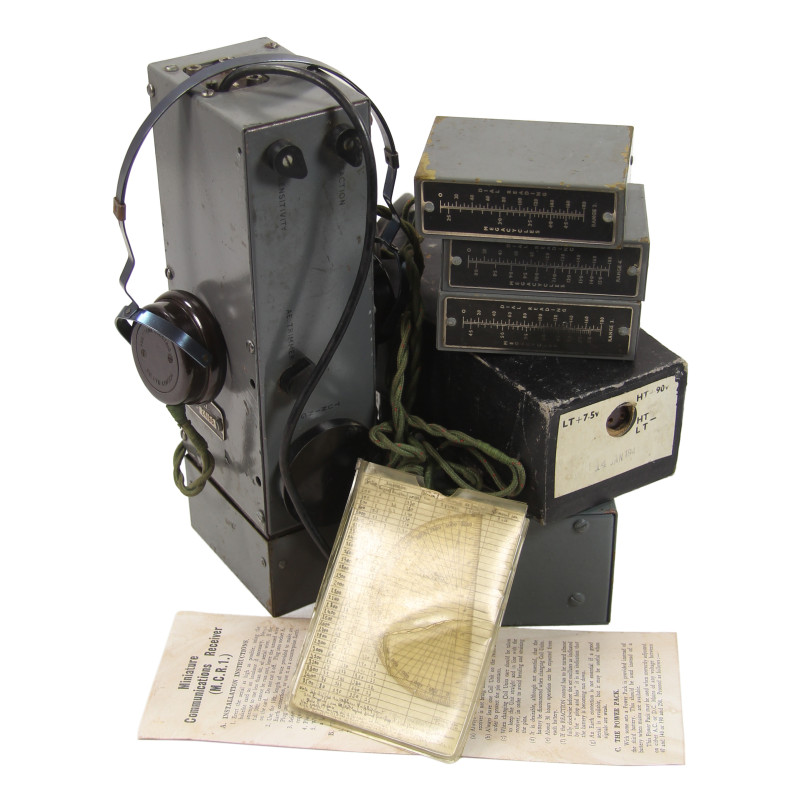






























Receiver, Radio, MCR-1, SOE, 1944, Lyon
Scarce genuine WWII British MCR-1 (Miniature Communications Receiver). This modular valve-based clandestine receiver was developed in 1943 by Captain John Brown and built by Philco. Intended for the SOE and other special units, it was subsequently adopted by the British Army. The internal designation for the receiver was Type 36/1, but it is commonly known as Midget Communications Receiver MCR-1.
This type consists of a rectangular receiver, with four plug-in coil packs that can be attached at one end, a separate Power Supply Unit of the same size as the receiver, and various accessories. Each set was distributed in a water-tight sealed tinned-steel biscuit tin, hence the 'Biscuit Tin Receiver' nickname. Many were dropped over occupied Europe for the reception of the often coded messages, and the MCR-1 became a very popular receiver with Resistance groups in various countries
It could also be used as part of complete radio stations, such as the Type 46/1 (Jedburgh Set) and the Type 48/1 (Nicholls Set). Production of the receiver started in late 1943, and by the end of the war more than 30,000 units had been made. After the war, the MCR-1 became a desired collector's item, as only a modest quantity had survived.
Dated January 1944, this extremely rare, early type set was intended for field use -- as indicated by the extra battery -- by Resistance organizations, SOE, SAS, and Jedburgh Teams. Almost complete (ground connection and hearphones are included but the antenna is missing). A small instruction sheet and a protractor complete this amazing set.
Excellent overall condition; found a few years ago in the attic of an old house located in the suburb of Lyon, France.




